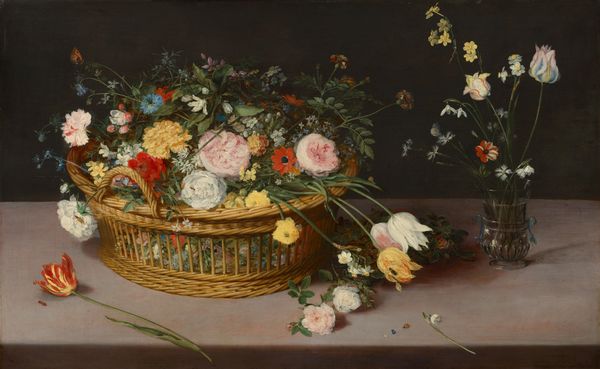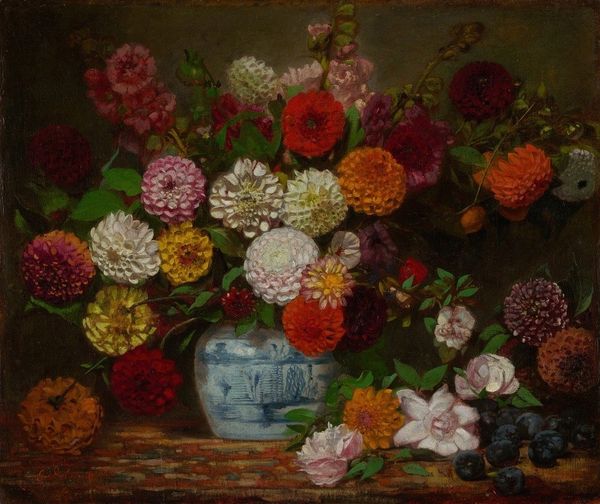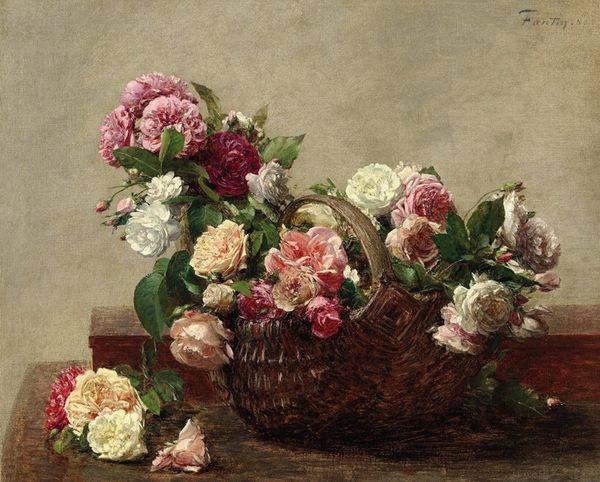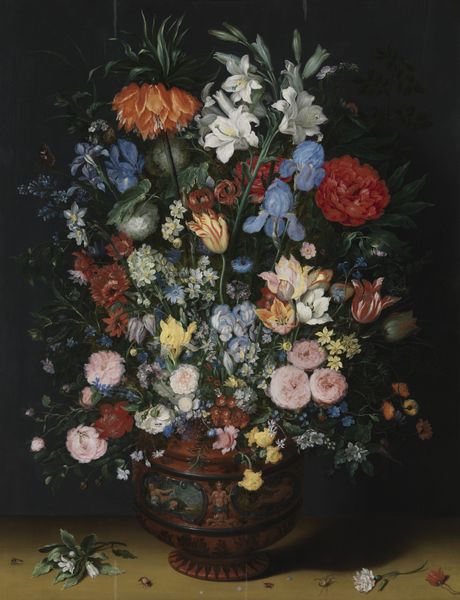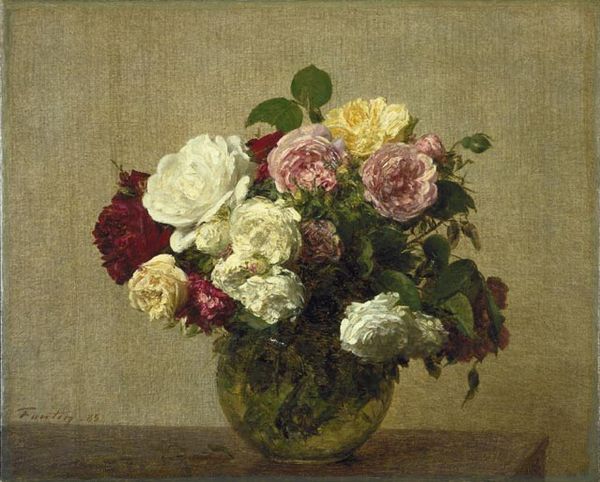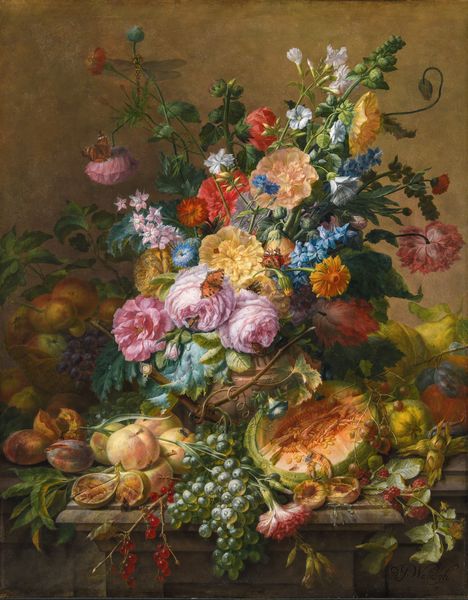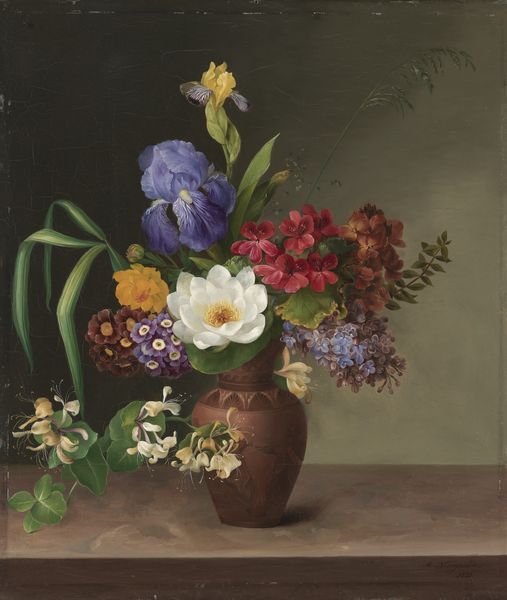
painting, oil-paint, ceramic
#
portrait
#
gouache
#
baroque
#
painting
#
oil-paint
#
ceramic
#
flemish
Copyright: Public domain
Jan Brueghel the Elder painted ‘Flowers in a Porcelain Bowl’ during a time when the Dutch Golden Age flourished with unprecedented trade and exploration. Brueghel's still life isn't merely a depiction of flowers; it's a statement about global exchange and power. Each flower, sourced from different parts of the world, represents the reach of Dutch mercantile power. Consider the emotional weight of these blooms. What does it mean to capture their beauty, knowing they came at the cost of extensive colonial networks? The flowers, arranged in a delicate porcelain bowl, contrast with the sometimes brutal realities of their acquisition. Still life painting wasn't just about aesthetics, it was deeply embedded with cultural and historical narratives. Brueghel challenges us to consider the complex interplay between beauty, commerce, and colonial expansion. What does it mean to create art that reflects a society's values, even when those values are fraught with ethical dilemmas?
Comments
No comments
Be the first to comment and join the conversation on the ultimate creative platform.
